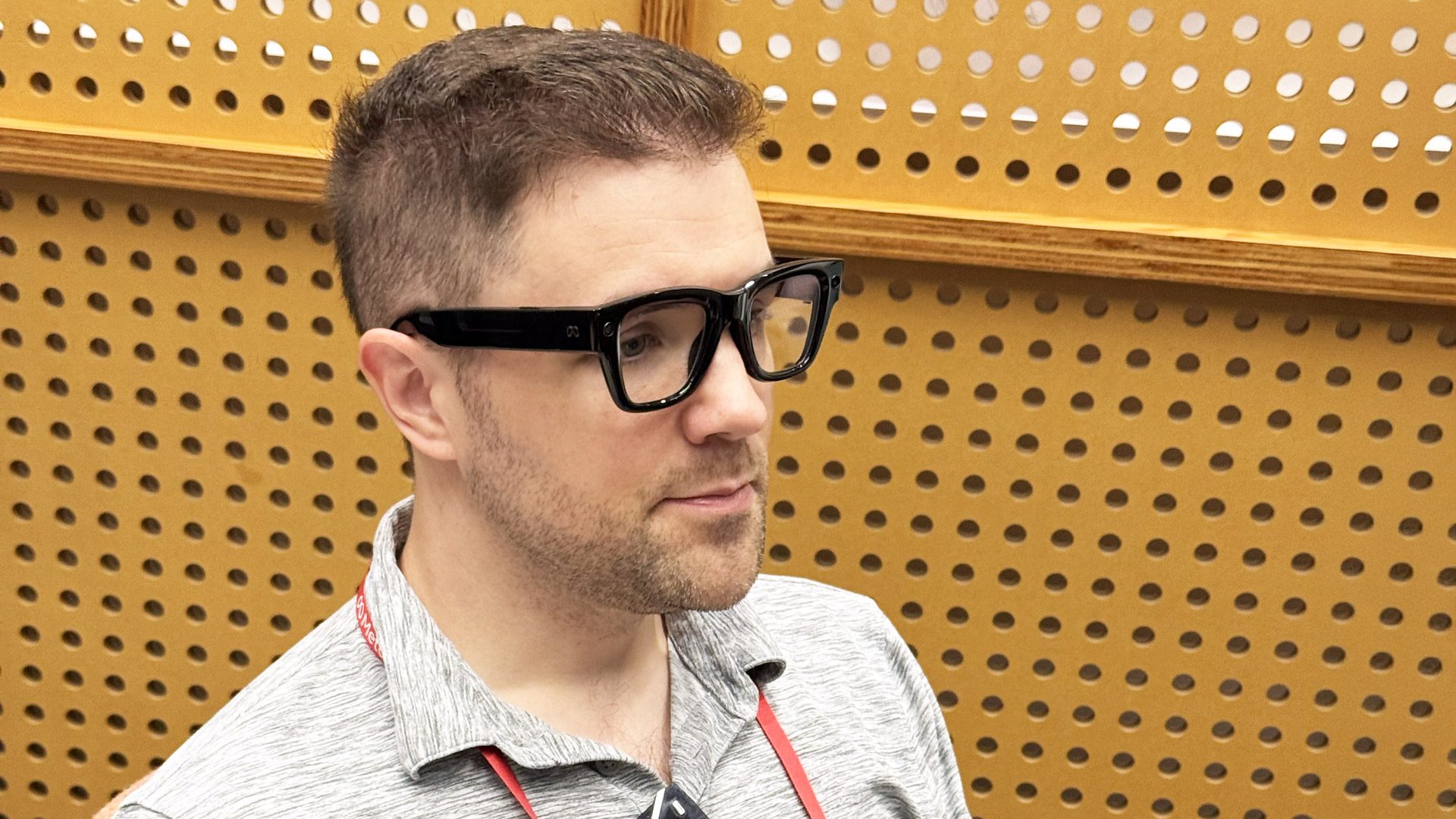Could Meta's Ray-Ban Display Glasses and Neural Band Redefine AR Technology?

Published: 2025-09-18 00:36:05 | Category: Finance-Stocks
The newly announced Meta Ray-Ban Display glasses mark a notable advancement in smart eyewear, incorporating a small monocular display and an innovative input device called the Neural Band. While still a step away from true augmented reality (AR), these glasses introduce several enhancements that significantly improve user interaction and functionality for everyday tasks.
Last updated: 28 October 2023 (BST)
Key Takeaways
- The Ray-Ban Display glasses feature a 20° monocular display for enhanced functionality.
- The Neural Band allows users to control the display through subtle muscle movements.
- Real-time translation and closed captioning are significant improvements for communication.
- The clever design of the charging case enhances portability.
- Meta aims to perfect lifestyle factors essential for future AR glasses.
A New Category for Meta
The Ray-Ban Display glasses represent a new direction for Meta, transitioning from audio-only feedback to incorporating a visual display. This shift not only broadens the functionality of smart glasses but also sets the stage for future developments in augmented reality. While the current display isn't sufficient for full AR experiences, it provides valuable features that make daily tasks easier and more intuitive.
The Benefits of a Monocular Display
The introduction of a 20° monocular display is a significant upgrade for the Ray-Ban Display glasses. Although this display is not enough to create immersive augmented reality visuals, it enhances user experience in various ways. For example, when asking Meta AI for a recipe, users can now view the instructions directly on the glasses instead of relying solely on audio feedback.
This ability to see information as text allows for smoother interaction, reducing the need to repeatedly ask for information or reach for a smartphone. Users can now follow along with instructions, read messages, take photos, and receive translations more efficiently, making the glasses more versatile for everyday use.
Enhanced Messaging and Communication
With the new display, users can view entire message threads rather than just hearing audio readouts. This capability is particularly beneficial for those who prefer reading over listening, and it allows for real-time corrections while replying to messages. When capturing photos or videos, the inclusion of a viewfinder ensures that users can frame their shots accurately, adding another layer of functionality.
Real-time Translation and Accessibility
The Ray-Ban Display glasses also improve the real-time translation feature by displaying translated text rather than relying solely on audio. This enhancement helps users focus on both the speaker and the translation, making it easier to understand conversations in noisy environments. The glasses can even provide closed captioning for those who are hard of hearing, showcasing Meta's commitment to inclusivity and user experience.
Design Considerations and Usability
Meta has strategically designed the Ray-Ban Display glasses to be socially acceptable. The display is positioned off to the side of the user's central vision, making it more of a glanceable interface than a distraction. Users can easily turn the display on or off with a double-tap of their fingers, allowing for discreet use in public settings.
The technical specifications of the display include a 0.36MP (600 × 600) full-colour LCoS output, which, despite its low resolution, provides clear visuals within its limited field of view. The brightness of up to 5,000 nits ensures usability in bright environments, while the low outward light leakage makes it less noticeable to bystanders.
The Neural Band: A Game-Changer for Input
The Neural Band, an innovative input device, plays a crucial role in navigating the Ray-Ban Display glasses. Unlike previous input methods that required direct line-of-sight or vocal commands, the Neural Band detects muscle activity, allowing for discreet control without awkward hand movements. This feature is particularly useful for users who prefer not to speak aloud in public settings.
Intuitive Navigation and Future Potential
The Neural Band enables users to navigate the glasses' interface through various gestures, such as pinching fingers together to select options, swiping for navigation, and other subtle movements. This intuitive method of control enhances the overall user experience and paves the way for future developments, including potential eye-tracking functionalities.
Future of Text Input
Currently, text input on the Ray-Ban Display glasses is limited to voice dictation, which may not always be appropriate in public settings. However, Meta has hinted at a forthcoming feature that allows users to 'write' messages by tracing letters on a surface, which would offer a more private and discreet method of input.
Practical Design Features
A surprising highlight of the Ray-Ban Display glasses is their charging case. Unlike the bulky cases of previous Meta products, this new case boasts a clever origami-like design that folds flat for easy storage. This consideration for user convenience indicates Meta's understanding of how these devices fit into everyday life.
In addition to the charging case, the glasses' real-time translation feature can serve as closed captioning, allowing users to read the spoken words of others in real-time. This capability is particularly beneficial for those who are hard of hearing, enhancing accessibility.
Looking Ahead: The Future of AR Glasses
While the Ray-Ban Display glasses may not yet offer full augmented reality capabilities, they represent an important step forward for Meta. By refining the user experience and focusing on essential lifestyle factors, Meta is positioning itself to deliver more advanced AR glasses in the future. The combination of a functional display, intuitive input methods, and thoughtful design choices lays the groundwork for more sophisticated devices that could revolutionise how users interact with technology on a daily basis.
As Meta continues to innovate, the potential for integrating smart glasses into everyday life becomes increasingly apparent. These advancements could lead to a future where AR glasses seamlessly enhance our experiences, making technology more accessible and user-friendly.
FAQs
What are the main features of the Meta Ray-Ban Display glasses?
The Meta Ray-Ban Display glasses feature a 20° monocular display for text visibility, improved messaging capabilities, and a Neural Band for intuitive control without voice commands.
How does the Neural Band work?
The Neural Band detects muscle activity in the user's fingers, allowing for discreet interaction with the glasses' interface through gestures such as pinching and swiping.
Are the Ray-Ban Display glasses suitable for outdoor use?
Yes, the display can reach up to 5,000 nits brightness, making it usable in bright outdoor environments. The Transitions lenses also aid visibility in varying light conditions.
What improvements have been made for real-time translation?
The new glasses display translated text rather than relying solely on audio, making it easier for users to follow conversations and understand translations in noisy environments.
When will the writing input feature be available?
Meta has indicated that a writing input feature using finger tracing is forthcoming, though it is unclear whether it will be available at launch or introduced later.
As the landscape of wearable technology evolves, the Ray-Ban Display glasses from Meta could herald a new era of smart eyewear that blends seamlessly with our daily lives. Will we soon see a world where augmented reality is an integral part of our everyday experiences? #Meta #RayBan #SmartGlasses



